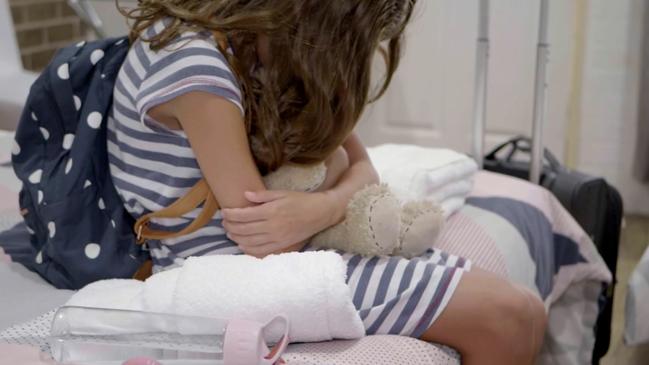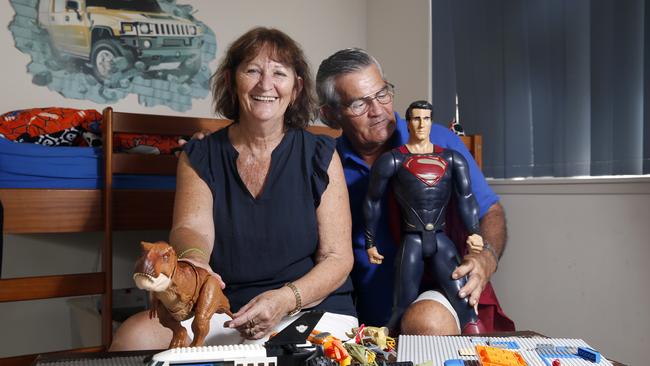Qld out-of-home care home costs skyrocket amid growing need for child protection services
A new push to recruit more foster carers has been labelled a cost saving tactic to rein in a massive state spend on child protection services as more kids than ever before get removed from abusive families.

Cairns
Don't miss out on the headlines from Cairns. Followed categories will be added to My News.
A new push to recruit more foster carers has been labelled a cost saving tactic to rein in a massive state spend on child protection services as more kids than ever before get removed from abusive families.
According to the 2023 Report on Government Services released earlier this year $1.2b was spent in 2021-22 on child protection care services in a skyrocketing increase on a $354,724,000 outlay in 2012-13.
By comparison Victoria spent $9.6m in the same period and has a population 1.3m greater than Queensland.

In the past 10 years the total number of children admitted into out-of-home care, including resi care and foster care has increased from 8136 in 2011-12 to 9651 in 2020-21.
Announced in February the “We need more foster carers, like you” statewide television and digital drive features Cairns foster parents spruiking rewarding benefits of looking after disadvantaged children.
But the glossy campaign doesn’t tell the full story, according to former Cairns Child Safety worker Jo Borg.
She said the foster system was a low cost way to support increasing numbers of children removed from abusive and neglectful birth parents given a carer allowance of about $600 a fortnight compared to an estimated $800 per night for each child placed in resi care.
“There is political pressure on them around the resi model of care, because it’s an extremely expensive model of care and produces very negative outcomes,” she said.
“It not a model of care that produces good outcomes and it’s not conducive to their wellbeing.
“Foster care is cheaper because they get paid a pittance.”
Ms Borg said most foster carers ended up being out-of-pocket after shelling out for specialist medical bills, school supplies, clothing, hobbies and sporting equipment.
The former Department of Child Safety Aboriginal and Torres Strait Islander practice leader said the need for foster carer recruitment drives were two-fold.
“There is never enough foster carers, when they recruit foster carers they are treated like sh*t and it’s not a system that is empowering of carers in terms of providing care to the child or the way they parent,” she said.
“Over the last five years child removals and children going into out-of-home care has skyrocketed and that would be the other reason they have to recruit new carers.”

Queensland currently has more than 6000 foster and kinship carer families.
Cairns foster carer Evelyn Hayward began caring for a five-year-old boy after he was removed from an abusive and drug addicted mother.
She cared for the boy, dedicated her life to his wellbeing and managed to get the child from special education classes into mainstream schooling. She said he was engaged in sport and a happy kid.
Then Child Safety stepped in and removed the boy and a custody battle through the courts kicked off.
“He was seven when they took him. They had him for a month or six weeks and then they were begging for me to come and take him back and I said no unless they could guarantee they would take him away again,” she said.
“I got custody after a court battle and a couple of years later they came and took him again.
“All wanted was for this boy to be looked after, because he wasn’t being looked after with the other carers.
“It broke us, we spent every cent on him.”
Now 25 years old the “boy” has been in and out of jail and was described as “lost” by Ms Hayward.
“They have destroyed this little boy’s life,” she said.
Cairns based foster carers of 14 years Kathy and Ken Wong signed up to be specialist carers when two of their three birth sons had left home.

Ms Wong has raised to adulthood high need children suffering from cerebral palsy and bipolar. She now has in her care a 14-year-old and an eight-year-old who has been diagnosed with cancer.
Ms Wong said the department having difficulty in attracting new foster carers was centred around a certain perception of children in need of care.
“No one wants to do it because they feel like they are going to get problem kids, which they are because the kids are damaged in some way,” she said.
“When they miss out on that nurturing it’s very hard for them, when they have been through that, who do they trust?
“Do (carers) have the time to try and help fix them?”
Ms Wong said in general her experience with Child Safety had been positive but a less than generous fortnightly caring allowance of $664.16 for children older than 11 was not enough to cover costs of raising modern kids well.
“In all the years we have been doing it (the allowance has) gone from $500 to $600 a fortnight in the 14 years we have been doing it,” she said.
“You pay everything out of that. And a lot of people can’t afford to do that.
“You do at times dig into your own pocket. They have missed out on so much you want to make up for what they have missed out on.”
The number of all children admitted to out-of-home care in Queensland has increased 18 per cent in the past 10 years from 7999 in 2011-12 to 9433 in 2020-21, according to the latest Report on Government Services.
The Productivity Commission’s Report however does not include a subset of children who are in “other supported placements” and Child Safety states as of September 2022, there were 11,427 children in out-of-home care, of which 85 per cent lived with foster or kinship carers.
According to the Department of Child Safety, high demand for child protection and family support systems is being driven by increasing drug and alcohol issues, the growing complexity of families and the social and economic impacts of Covid-19.
“The department is working with providers and peak bodies to examine the rising costs associated with residential care,” a spokeswoman said.
“Cost pressures are attributed to the rising of costs of living; wage and superannuation increases; the escalating number of children in care with complex needs and challenging behaviours; and expenditure to better support young people transitioning from care to adulthood.
“The department is increasing the number of family-based care arrangements, including foster and kinship care, and is working with community-controlled organisations to grow kinship care for Aboriginal and Torres Strait Islander children and young people.”
More Coverage
Originally published as Qld out-of-home care home costs skyrocket amid growing need for child protection services




